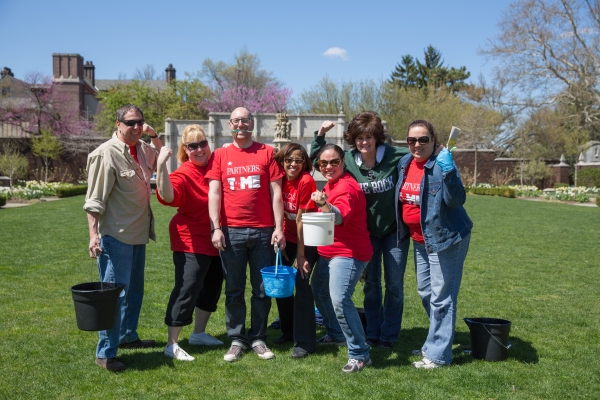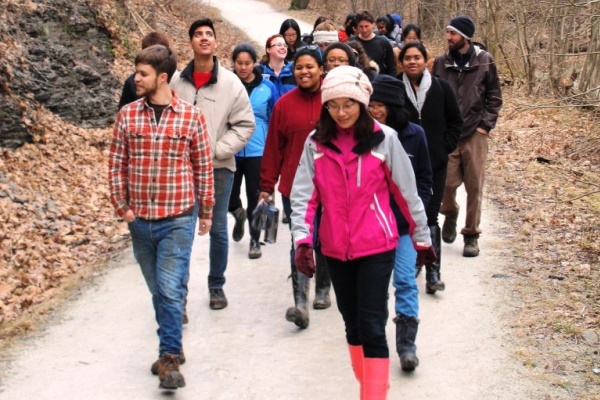Visit any of our country’s national parks, and the first few faces that greet you on your way in are there to help you make the most of your time outdoors. They’re trained to help you find the right trail, stay safe, learn about park history, and maybe, most importantly, locate a bathroom. These wonderful people make your park adventure exponentially better.
Soon, friendly faces like those found in our national parks will also greet you upon arrival in Frick Park. And, we’re excited to announce, one of those faces could be yours!

The new building will serve as a welcome center at the gates of Frick Park.
Starting this year, we’re introducing a new opportunity fit for those who love parks and want to tell the whole world about ’em. The new Volunteer Naturalists program, kicking off next month, will train a small cadre of park lovers to be part docent, tour guide, and welcome wagon at the new Frick Environmental Center.
What is the Volunteer Naturalist program?
Commencing February 8th, the program includes eight small-group trainings that cover topics like Frick Park history, park interpretation, CPR, and the new Frick Environmental Center building. Taught by long-time Naturalist Educator Mike Cornell, these trainings are designed to give Volunteer Naturalists — whatever their background coming into the program — the tools to be park experts.

Mike says: “Any adult can become a Volunteer Naturalist. All you need is a passion for nature and history, and a desire to share that passion!”
The Frick Environmental Center, once opened, will be home base for the Volunteer Naturalist squad. They’ll be stationed here to provide park visitors with insights on things like the best trails for strollers, the energy-saving aspects of the new Center, how to get involved in volunteering, and much more.
In case you needed any more reason to join, Volunteer Naturalists will also be getting special swag like shirts, hats, and water bottles!
Applications are currently being accepted for this program. Interested? Find more information and sign up here.
Questions? Contact Mike at mcornell@pittsburghparks.org.




















